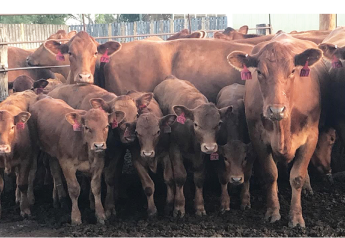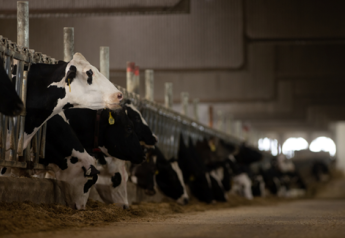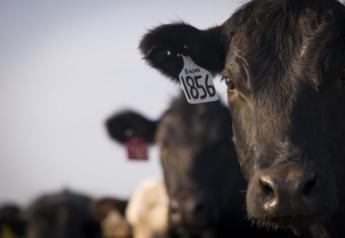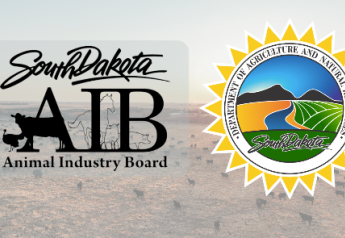Mobile Veterinary Clinic is the Cornerstone for Young Couple's Agricultural Endeavors
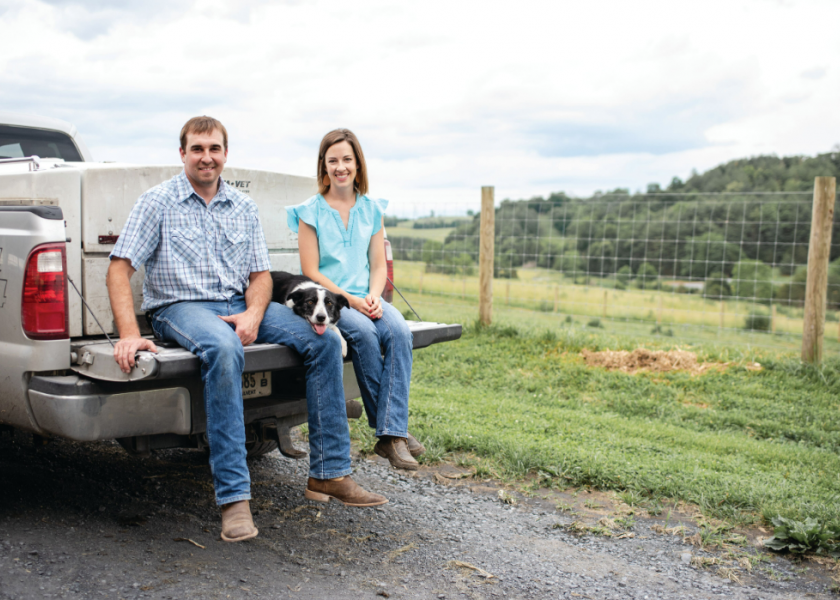
Brendan Martin spends his days on the move. After checking off chores on his farm, he jumps in his truck and starts clocking miles. Across multiple farms within an hour radius, he’ll perform a host of services, from reproductive ultrasounds to castration to dehorning to physical exams.
“I don’t want to be inside all day performing small animal work,” he says. “Instead, I work outside all day long with cattle and cattle producers.”
As owner of Valley Herd Health, a large animal mobile veterinary practice based in Verona, Va., Martin combines two passions: veterinary medicine and a love of agriculture.
Throughout his childhood, Martin’s No. 1 goal was to be a farmer. His plan: skip college and start buying cows and land.
“I didn’t see the need to waste four years and the dollars on tuition to delay my dream,” Martin says. “But I realized, you can’t graduate high school and go buy $1 million farm.”
In researching career paths, Martin shadowed a local large-animal veterinarian for a year and a half, as he completed his high school years. The first-hand experience in high school fuel a fire within Martin. He became the first person in his family to attend college, earning a Doctor of Veterinary Medicine at nearby Virginia Polytechnic Institute and State University. In 2017, Martin opened Valley Herd Health.
HAVE TRUCK, WILL TRAVEL
Martin and his wife, Elaine, are both multi-generational farmers. His farming roots run deep in the Shenandoah Valley, while Elaine grew up on a central Missouri row crop and cattle operation. Now the pair have created their own first-generation farm near Mt. Solon, Va.
With extensive first-hand farm experience, Martin knew the specific needs and wishes of his veterinarian customers. Plus, he wanted to be strategic with his financial investments in building a brand-new business. So, he opted for a mobile clinic.
The business still has a brick-and-mortar headquarters, which is manned by two office staff who schedule appointments and sell over-the-counter animal medication, ear tags, mineral feeders and other supplies. While this creates some overhead expenses, they are minimal compared to a fully operational vet clinic.
STUDENT OF THE INDUSTRY
Beyond providing top-notch services, Martin is a student of his customers. “I learn every day by being at somebody else’s farm,” he says.
Those insights are fed into the Martins’ two other businesses, a beef and crop operation and direct-to-consumer beef business.
For their farm, the Martins have borrowed and combined technology, infrastructure and ideas to build cattle facilities that increase cow comfort and feeding efficiency.
“The automatic curtain system on our barn is an idea we borrowed from the pigs and the poultry industry,” he says. “It senses rain and air temperature, so the curtains come down in a big rain and don’t let the bedding get wet.”
In addition, they decided to build an office and kitchen space that adjoins their facility. This provides a professional, dedicated space for sorting and shipping the retail beef.
Beyond production, Martin says he’s also learned a few profitable tips for marketing cattle.
“I know you need to market cattle, not just sell them,” he says. “If you haul cattle to the sale barn and just unload your trailer, they will send you a check. But if you didn’t check with them for a time to bring them, tell them what you have, etc., you’re just going to be a price taker.”
ORGANIZE AND PRIORITIZE
With having three distinct business under their care, the Martins are routinely asked: How do you do it all?
“Planning ahead helps,” Martin says. “We try to never put ourselves in a jam. We do a lot of preventative maintenance. Elaine can do just about everything I can on the farm, so we divide up a lot of the work.”
“A lot of vet and farm work is predictable,” Elaine adds. “So, we try to use those windows of opportunities for our farm work, so it doesn’t negatively impede the vet business.”
In all of their roles, the Martins stay focused on their priorities, finding little ways to make big strides.
“If you do an extra project every day, you make progress,” Martin says. “If all you do is feed your cows each day, you haven’t done anything extra and you get behind.”
As the Martins look toward the future, they base their decisions and goals around a simple mission statement: We strive to treat our customers as friends and their livestock as our own. We believe in doing business honestly, providing sincere customer service, and using our knowledge to treat their livestock to the best of our ability. We believe in continual learning and strive to advance the livestock industry through veterinary medicine.
A few times a year, they meet with their employees and consultants to set business direction. This is vital, as the clinic is in a highly competitive area — nearly 30 ambulatory veterinarians practice within 30 minutes of Valley Herd Health.
“Brendan looks at key metrics every month that show where we’re growing customer base, overall sales, etc.,” Elaine says. “Since we are in such a competitive area, our pricing has to be competitive.”
BRIGHT FUTURE
Valley Herd Health just celebrated its seventh birthday. The business has grown steadily due to a key focus on customer service. “Brendan has great people skills, and he does a good job of setting an example and reminding the team customers always come first,” Elaine says.
In the future, they want to add to the Valley Herd Health team, allowing everyone to take time off more easily. The Martins know setting better business boundaries for themselves is also an area to improve.
“We’re young and our businesses are young,” Elaine says. “So, we lack some boundaries. But we have fun when it’s just us farming, and Sundays are a good time because the phone is not ringing.”
“We like being home and spending time together,” Martin adds. “We love agriculture, so that’s our fun.”




